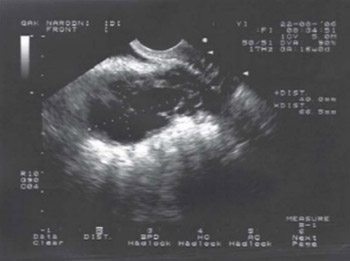Invasive Mole - Case Report of Massive Uterine Destruction
DOI:
https://doi.org/10.17305/bjbms.2008.2900Keywords:
gestational trophoblastic neoplasm, human chorionic gonadotropine, resistance index, transvaginal Doppler ultrasonographyAbstract
Patient with malignant Gestational Trophoblastic Neoplasm (GTN) was treated by mean of MTX-FA, MAC, EMA-CO and EMA-EP. Changes in serum human chorionic gonadotropine (beta hCG) levels and changes in ultrasonographic findings were checked weekly. Finally transabdominal hysterectomy with ovaries conservation was done and polychemotherapy administrated after the operation until three consecutive serum chorionic gonadotropine values were negative. This is a case report of Invasive mole in 32 years old patient without possibility to preserve reproductive health. GTN developed two months after spontaneous abortion in 13th week gestation. No changes in uterine structure were found during the first ultrasonographic examination. Three months after abortion and one month after GTN confirmed, massive destruction of lateral uterine wall was detected during transvaginal Doppler ultrasound examination. Resistance index of 0,366 was significantly lower than normal, with hypervascularisation in affected tissue. Serum beta hCG confirmed poor effect of polychemotherapy treatment and decision for operative treatment was made. Hystological findings after the operation confirmed malignant GTN- invasive mole. Specific changes in ultrasonographic picture could have an impact in therapy making decision and could not be refereed without the most relevant parameter such is serum human chorionic gonadotropine.
Citations
Downloads

Downloads
Published
How to Cite
Accepted 2017-12-27
Published 2008-11-20









